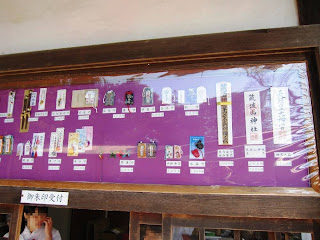This month I climbed Mt. Tsukuba again to take pics of a shrine in the mountain. I once said I didn't like to show you shrines again and again, but at the end of the day the shrines are where the Japanese people feel peaceful the most, and they remind us of the fact that the ancient Japanese people worshipped Shinto, to which all of the shrines belong.
To reach this Torii (gate), my friend and I had to drive up the slope for about 10 minutes. This shrine is one of the most popular shrines in my prefecture, and if I had had enough time, I would have come to this shrine on New Years Day to wish everyone the best during this year.
As you can see, this shrine is situated at a higher altitude than ordinary shrines, and that makes your every visit special. I had to go up several flights to reach this point.
One of the things that can only be seen in this shrine: The holy bridge. This was dedicated by a Tokugawa warlord in the 17th century. People are allowed to cross this bridge only on a certain day in February, April, and November.
As I explained in this posting, this is called Komainu. This one was also opening its mouth, so the alias of this dog must be "Agyou".
A man was performing to sell the oil called "Gama no abura (oil)". People were sitting in front of this man to listen carefully to his old story.
This is a close-up pic of "Gama no abura". It is basically ointment that people apply to a scar, and according to an old story, this is made by boiling a mixture of a hoptoad, centipede, and wax. You would need a courage to see its effectiveness.
And this is the inner shrine. This shrine enshrines the spirit of Mt. Tsukuba and had been cherished by many of the Tokugawa warlords in the Edo period(1603-1868).
The shrine maidens were selling these charms. There were many kinds of charm that each makes sure the safe birth of a baby, passing of an entrance exam and so on.
This tree is called "Marubakusu" and the leaves of this tree are so round. "maru" means "round". This is designated by our city as a protected species and was made public in a magazine in 1940.
I want to introduce a shrine that I might come across in the future. As I explained with the pictures above, each shrine has its distinctive feature, so perhaps you won't get tired of seeing a different shrine. And as for me, I was excited to visit this place for the first time in my lifetime =)








